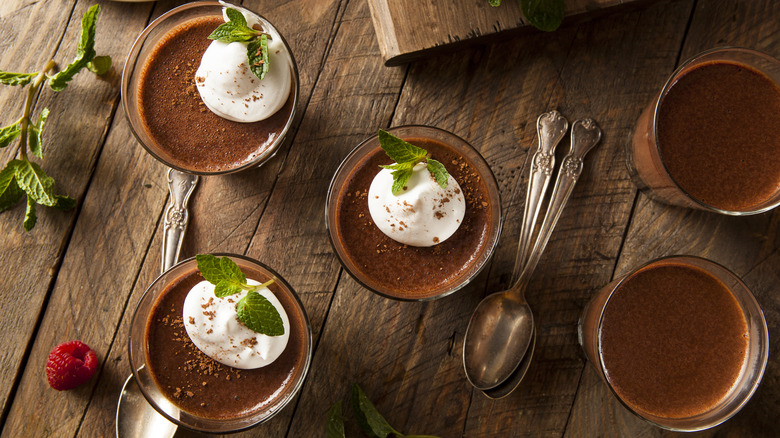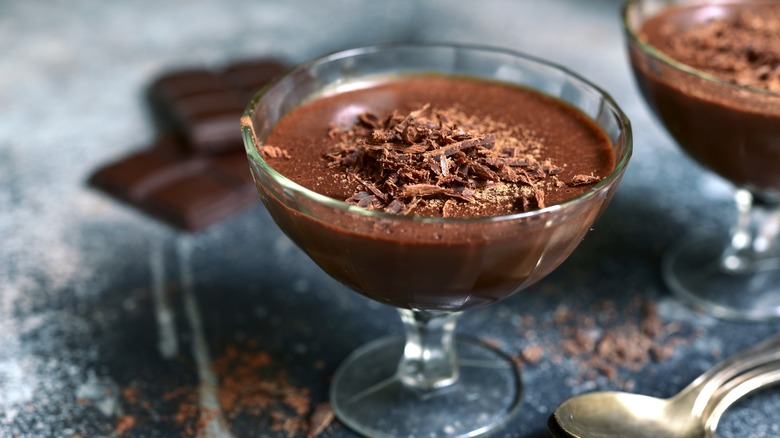Why Chocolate Mousse Was Once Referred To As Mayonnaise
Most English speakers would gag at the concept of sweet chocolate mousse being in the same sentence as tangy mayonnaise. However, the two decadent dishes actually have a lot of history together, the reason being each dish's heavy use of egg yolk. While mayonnaise is primarily made of adding oil to whisked egg yolk, most recipes for mousse include combining whipped cream, sugar, and eggs (using both the white and the yolk) for a light and airy finish.
Although many argue about the exact origin of mayonnaise as we know it today, the Larousse Gastronomique, a food encyclopedia published in 1938, shares the common belief that the word may actually come from the Old French term "moyeunaise" which translates to "egg yolk" in English. However, French chef Marie-Antoine Carême referred to mayo as "magnonnaise," which he named based on the French verb "manier" meaning "to stir" because of its pivotal whisking step. However, if the Larousse Gartronomique is correct about the origin of mayonnaise, it does make sense as to why chocolate mousse was once referred to as "mayonnaise de chocolat."
The beginnings of chocolate mousse
Breaking down the history of chocolate mousse further explains why it was initially described in this way. Instead of a chef's creation, mousse was actually invented by artist Henri de Toulouse-Lautrec in 19th-century France, and many historians blame him for the name "chocolate mayonnaise" as he was a very eccentric painter. While the description may simply have come down to his imaginative tendencies, the etymology of the word "mayonnaise" does show that there's some logic in the madness.
Since mousse typically contains egg yolks (along with whipped egg whites), calling the dessert "chocolate egg yolks" is actually not too far from the truth (though it does leave out the other classic ingredients of the dish, including sugar). After many years, the dessert we now know as mousse became a staple for French desserts, eventually being incorporated into recipes by Betty Crocker and Julia Child.
Over time, "chocolate mayonnaise" finally began to be referred to as "mousse," meaning "froth" or "foam." While this term is far more digestible and appropriate for a dessert, the origins of its name cannot be forgotten as the egg is such a vital ingredient in this dish.

